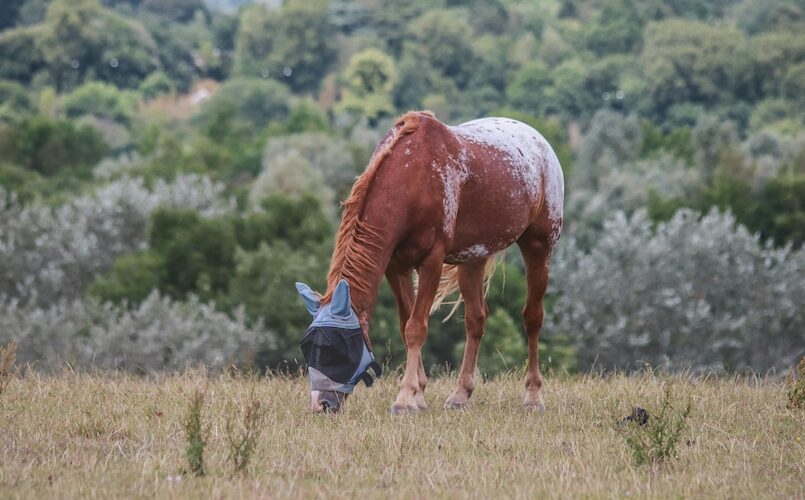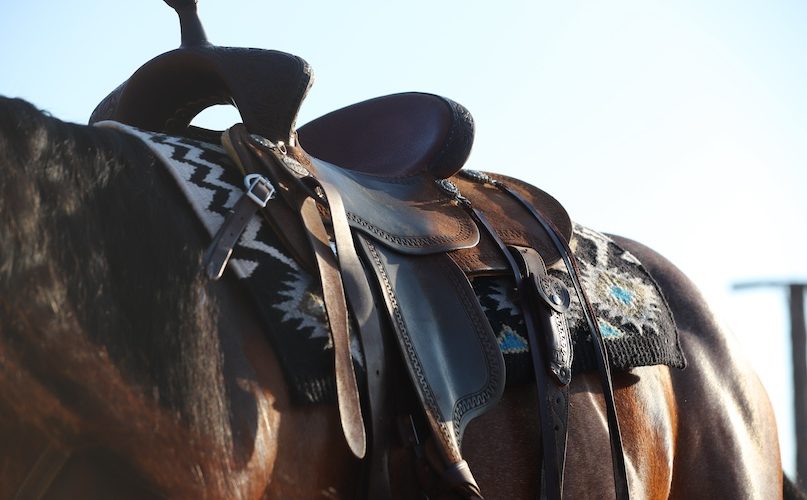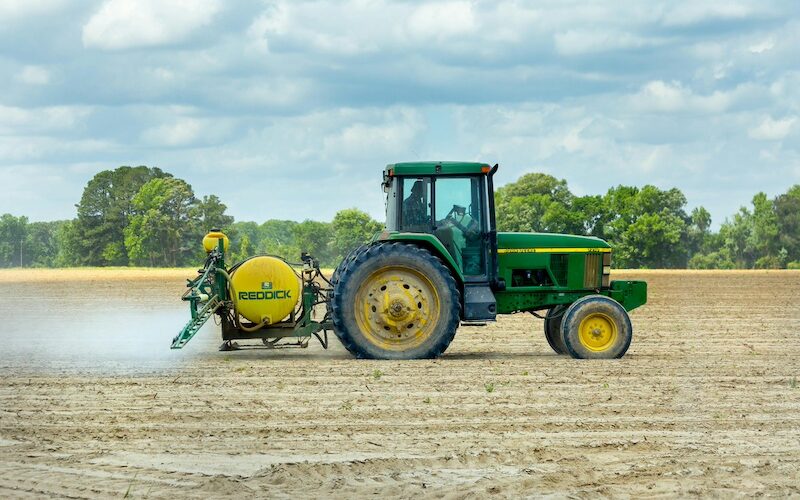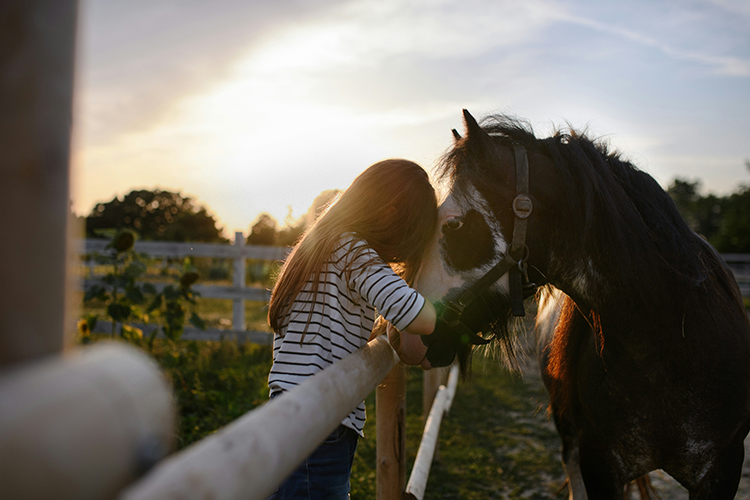Tack & Farm
Our Tack & Farm section features an Apparel section to find both practical and fashionable riding attire. If you ride English & Western or Race, many sources are available in the Tack section.
Building a barn? Need an architect for your equine dream home? Find one in Barns & Stalls.
Have a hungry horse? Of course you do! Find a place to buy your feed and tuck your horse in at night in the Bedding & Feed section. Looking for a place to keep your horse? You can find it in the Horse Boarding section. Keep your horse happy and beautiful with resources in our Grooming section.
Traveling? Find a Shipping company or Horse Sitting service if your horse is staying home!
Running and maintaining a farm or stable is a continuous effort, and to help find products or tools you need, please see our Equipment, Fencing and Management Tools sections.
Seeking Services? Find financial and tax expertise in our Accounting section. Companies who will help protect your investment are found in the Insurance section. For those who want legal advice about purchasing, liability, and other issues, please look at the Equine Law section to find an expert. Build and promote your business with teams from Marketing / Videography / Web Design.
Do we need to add more? Please use the useful feedback link and let us know!

by Kristin Pitzer
As temperatures rise, vegetation flourishes and daylight hours lengthen, there’s no doubt about it: summer is on its way. Many riders enjoy the extra sunshine and longer days, but with warmer weather also arrives the bane of every horse owner’s existence: flies and mosquitoes.
These insects are known for their painful bites and general annoying behavior, but they are also the bearers of something much more sinister. Without proper control measures, flies and mosquitoes can transmit some of the deadliest diseases to your horse.
Quarter Horse News spoke with Dr. Amber Grimes of Carter Veterinary Services, located in Hardeeville, South Carolina, to get the low-down on fly- and mosquito-transmitted diseases and find out how to prevent these pests in the first place.
Flies Spread More Than You Think
A number of diseases and conditions are spread by flies. The most significant in the U.S. include Equine Infectious Anemia (EIA), summer sores, Vesicular stomatitis and sweet itch. Horses that live in pastures bordering creeks and rivers can also be susceptible to Potomac Horse Fever, and those located in the Southwestern U.S. and other dry, arid areas could be exposed to Pigeon fever. For the most part, none of these diseases, except for Potomac Horse Fever, are preventable by vaccines.
“Fly control is so important for these diseases because there is no other method of prevention,” Grimes said. “Preventing the fly from getting to the horse is crucial in preventing diseases that have major consequences and sometimes no treatment.”
The majority of fly diseases are treatable, but failing to treat them can lead to severe outcomes. For instance, Vesicular stomatitis, which is highly contagious and spreads through biting flies, causes ulcers and erosions on the mouth, tongue, coronary band, udder and sheath. Summer sores, or habronemiasis, are caused when flies deposit habronema larvae into open wounds or mucous membranes, producing an inflammatory reaction that leads to non-healing wounds. Even sweet itch, which is an allergic reaction to bites, can cause hair loss, sores, infection and weight loss.
EIA, on the other hand, is not treatable. Once a horse contracts it, it must either be humanely euthanized or spend the rest of its life in isolation at least 200 yards away from any other equine animals. To prevent EIA outbreaks, horses that leave their property for any reason must be accompanied by a current negative coggins test.
Prevention Is the Best Defense
To protect your horse from fly-borne illnesses, the best thing you can do is limit the number of flies on your property. It may sound impossible, but there are several different ways you can create a “no fly zone.”
“Fly masks, sheets and boots are very important because they provide a barrier to the flies to help prevent them from getting on the horse,” Grimes said. “The downside is that some horses don’t tolerate them and pull them off or tear them. Sprays like permectrin also help, but I feel like I always hear that they don’t last very long. Some people install misters that spray at certain times of the day to continually keep the horse covered when in a stall.”
Other fly-control methods include picking up manure from stalls and pastures twice a day at minimum; placing fans on stalls that blow flies off horses; hanging up sticky tape and traps; and applying topical products like Vectra 3D, a monthly flea and tick preventative for dogs that can repel ticks and flies on horses. You can also add a feed-through formula to your horse’s grain, which prevents flies from developing in manure, rather than killing adult flies. It must be fed continuously to all horses on the property, plus horses in neighboring pastures; otherwise, you won’t see much difference.
Mosquito-Borne Illnesses Are Deadly, but Preventable
There are only four significant mosquito-transmitted diseases in the United States, but the ones that are present — Eastern equine encephalomyelitis (EEE), Western equine encephalomyelitis (WEE), Venezuelan equine encephalomyelitis (VEE) and West Nile Virus (WNV) — are quite deadly, with inflammation of the brain being the main symptom.
At 90%, EEE and VEE have the highest mortality rates. EEE is spread when mosquitoes feed on infected birds and then bite horses. VEE, despite its name, is found in many places outside of Venezuela, including the Southern U.S. While its hosts tend to be rodents and birds, which spread the disease to horses through mosquito bites, infected horses can pass the disease to other horses via mosquitoes, too.
WEE is similar to EEE in how it is transmitted, but it has a lower mortality rate at 20% to 40%. Birds are also the natural host for WNV, which has a 35% mortality rate, but while most horses recover, many are left with long-term effects like behavioral and walking abnormalities.
These diseases are definitely alarming, but fortunately, there is good news. All four can be prevented by keeping your horse on a consistent vaccine schedule.
“Mosquito control is important, but vaccines are just as, if not more, important,” Grimes said. “In populations where mosquitoes are very prevalent, it is advisable to vaccinate twice a year to prevent disease from occurring. It is much easier to prevent than it is to treat, especially since none of these diseases have treatments.”
Even Vaccinated Horses Need Mosquito Control
Even if your horses are vaccinated, it’s wise to limit mosquito development on your property for your horses’ comfort and your own. Some of your fly-control measures, like fly boots and sheets, sprays, traps and fans, can help with this, but there are other methods you can employ for mosquitoes.
“Eliminate standing and stagnant water to remove their breeding ground, along with vegetation that could be their habitat,” Grimes said. “Clean your water troughs regularly, and if you have stalls that are completely indoors, you can keep your horses in during dawn and dusk when mosquitoes are most active. There are also natural repellants like garlic, apple cider vinegar and essential oils such as citronella and eucalyptus that are said to repel mosquitoes.”
Layer Your Defenses to Ensure Complete Protection
If you live in a region that is particularly prone to flies and mosquitoes, you may have to employ multiple methods to get some semblance of control. A barrier, like fly sheets, boots and masks is the first step, Grimes said, followed by good environmental practices.
“I believe that a combination of these things is of great benefit,” Grimes said. “Keep the property free of manure, use traps to get the adult flies and mosquitos, give feed-throughs to prevent more flies from maturing and spray repellants. Most importantly on the mosquito side is vaccinations. Vaccination is at the top of my list due to its ability to prevent mosquito diseases. Twice a year vaccination in heavy mosquito populated environments is highly recommended.”
Preventing these diseases is often easier than treating them, so if you don’t already have control practices in place, it’s a good idea to start now. You likely won’t eliminate every fly and mosquito on your property, but by taking preventative measures, you can limit the number that come into contact with your horse. That way, you’ll be able to spend more time riding and enjoying the long summer days ahead.
This article originally appeared on Quarter Horse News and is published here with permission.
There are more informative and entertaining articles in our section on Tack & Farm. While you're here be sure to check out our Curated Amazon Store.

by Kristin Pitzer
For many equestrians, saddle shopping is exciting, but stressful. Saddles are one of the most expensive pieces of equipment you’ll purchase for riding, and the options are endless, depending on the discipline you ride, design you’re seeking and price point you want to pay.
One way riders stretch their budgets is by buying used, as quality used saddles typically have lots of life left in them. The ease of finding used saddles online through private individuals means you might not see the saddle in person before buying it, though, which can lead to problems. Even purchasing in person from a dealer shouldn’t be taken lightly.
Quarter Horse News spoke with Adam Schwalm, owner of The Saddle House in Sealy, Texas, which sells new custom saddles as well as high-end used saddles, to get some tips on buying used.
Decide if Used Is for You
One of the perks of buying a used saddle is that they tend to be cheaper than new saddles. That doesn’t mean they’ll be free — a high-quality used saddle can still set you back several thousand dollars — but you’ll likely drop far less than you would if the saddle were new. High-end used saddles that have been maintained well — cleaned, oiled and kept in a climate-controlled area — can last 20-30 years, and some even longer if cared for and stored correctly. Plus, they are usually already broken in, meaning if they’re sized correctly, they’ll feel comfortable and secure from the get go.
On the other hand, buying used can come with its own complications. New saddles tend to have warranties, whereas a used saddle probably won’t. That means if you shell out money for a used saddle and the tree breaks shortly after you get it, you will likely be out the cash, especially if you purchased from a private individual online.
“When buying used online, you don’t know what you’re getting as far as wear and tear, quality or craftsmanship,” Schwalm said. “Buying a reputable brand helps to relieve some of that concern as far as quality and craftsmanship, but a lot of times, people don’t show you everything in the photos.”
Utilize Shops With Good Reputations
Where you purchase a used saddle from makes a difference. While there are many honest private sellers out there, there are just as many that will hide flaws in the saddle or will be too optimistic in determining its condition. Buying from a higher end tack shop or a saddle maker is usually less risky.
“They normally will go through saddles before they resell them to make sure everything’s in good working order,” Schwalm said. “If I’m selling a used saddle, my reputation is on the line that goes with it. We’re going to stand behind it, make sure it’s a good product, because I don’t want to look bad over making a little bit of money on something like that.”
Look for shops that have decent return policies so that if the saddle doesn’t fit, they can either refund your money or help you find a different saddle that works instead.
Inspect in Person if Possible
Shopping online is popular these days, but if you can inspect the saddle in person before buying it, that is ideal, Schwalm said. Seeing it in person is even better if you can bring your horse along to try it on, so you know without a doubt it will work for your situation.
When inspecting a saddle, be sure to check the tree, leather parts, rigging and fleece. You can press on the tree to make sure it’s sturdy and not broken. Watch out for cracks, tears and dry rot in the leather components. Make sure the rigging is not coming apart, and check to see what kind of condition the fleece is in.
“Is it real fleece or synthetic? Higher-end saddles will have real wool,” Schwalm said. “Does it have some padding to it, or is it kind of matted down and hard? Has it rubbed off, and does it need to be redone?”
Size Correctly
Sizing is an important part of buying any saddle, whether new or used. If the saddle doesn’t fit your horse correctly, it can cause pain and long-term physical damage that can lead to behavioral issues and reduced performance. Dealers at tack shops can usually help you find the right fit, but if you’re shopping online, be aware that not everybody knows how to properly measure saddles.
“Most of the time when you’re buying a used saddle online from an individual, unless they have the specs from the maker, they probably do not have accurate information on that saddle,” Schwalm said. “The best thing you can do would be to check the serial number if they have one, or check with the maker. Most people with a tape measure or a yard stick taking pictures of their saddle are not correct on most of the measurements.”
Things to look for include gullet width, whether the saddle has full quarter horse or semi quarter horse bars, and the seat size of the saddle. If you find a saddle that has the measurements you think you need, but it’s not local to you, try to find a similar one you can try out in person.
“If you have a friend with one, that’s a great way of doing it, or maybe you can haul your horse to a show and try it on there,” Schwalm suggested.
Don’t Be a Victim
If you decide to purchase a saddle online from a private individual, proceed with caution. Unfortunately, there are lots of swindlers out there just waiting to take advantage of someone willing to hand over their money. You could end up with a saddle that looks nothing like its pictures, or no saddle at all.
“Facebook is not a great place to be shopping for saddles these days — there’s a million scammers out there,” Schwalm said. “I see a lot of saddles online where people aren’t using current photos or are using somebody else’s photos. There’s no telling what’s happened to that saddle since those photos were taken. I get that a lot — people send me pictures of a saddle from four years ago, and it shows up looking nothing like the photos.”
This article originally appeared on Quarter Horse News and is published here with permission.
There are more informative and entertaining articles in our section on Health & Education. While you're here be sure to check out our Curated Amazon Store.

by Kristin Pitzer for Quarter Horse News
A dream many equestrians have is to one day own their own horse property, and for those with only a few horses, buying 20 acres or less can make that dream obtainable. But no matter how small your horse property is, it’s probably going to require more than just a push mower to keep it maintained and functional. If you’re building from scratch, moving heavy equipment around, or even just maintaining large pastures, you’ll likely want to consider buying a tractor to get your tasks accomplished.
Purchasing farm equipment can get complicated quickly, especially if you don’t have any experience with it. It’s not as easy as just walking into a store and selecting any model — you’ll need to do some research on your wants and needs before you ever set foot in a dealership.
Quarter Horse News spoke with Mark Davey, marketing manager at John Deere, and Ty McMaster, Salesman at McMaster New Holland, to get some tips on what to consider when purchasing a tractor for small acreage.
Assess What Work Needs to Be Done
The first thing to think about is what jobs you will need to do on your property. If you already have all the buildings and fencing you want in place, you might just need a small tractor capable of mowing and moving heavy things around. When starting with raw land, though, where you’ll be building fences, ripping out brush or grading roads, you’ll need something that is heavier duty with more horsepower.
“I always ask, are you feeding round bales?” McMaster said. “If you are, you’ll need something that will lift a round bale. Our general rule of thumb is 50 horsepower to lift a round bale safely. Anything less than that, you’re going to be looking at premature wear on your front end.”
Think about the implements you’ll need and how heavy they are. Heavier attachments will require more power to operate and move.
“One top implement that many customers want is a loader, but many also go one step further to get third function hydraulics on the tractor/loader, which allows you to use a grapple to move brush or fence posts more effectively,” Davey said. “Maintaining a gravel road somewhere on the property is quite common. Usually, a box blade or a land plane is a very popular option to grade and spread gravel to keep these roads in top condition.”
Calculate How Much Horsepower You’ll Need
The jobs you’re planning to do will make a difference on the amount of horsepower you need. The more horsepower a tractor has, the heavier the implements it can manage, and the faster it can accomplish tasks like mowing.
“The horsepower usually gets into how much work do you need to get done, and how quickly,” Davey said. “A bigger horsepower tractor will pull a wider rotary cutter to mow that pasture faster, for instance. If you have to tow something with more weight, it requires more engine horsepower. Each rotary cutter has a Power Take Off (PTO) horsepower range that you need in order to properly operate that cutter to mow the pasture.”
This is where the question of whether you plan to feed round bales comes into play. Even some arena drags are heavy enough that they might need a minimum of 60 horsepower to pull them.
“If you are using a common arena drag, a 30 or 35 horse[power] tractor can do that no problem,” McMaster said. “If you’re mowing around your property, you can use a 30 to 40 horse tractor, and you will be looking at a 6-foot mower maxing out, which is fine for a small property. You can get into some tight spots, through gates, no problem. It’s not going to be too cumbersome, and it’s not very expensive either.”
Decide Where to Invest: Time or Money
Once you have an idea of what you’ll need for your property, you’ll need to start saving for your tractor. A good rule of thumb, McMaster said, is to plan to spend about $1,000 per horsepower.
“One thing that I ask people is, what do you want to spend more of? Do you want to spend more time or more money?” McMaster said. “If you don’t like mowing and want to be done as quickly as possible, we need to get you the widest deck we can. That way you’re cutting down on your time. But if you enjoy mowing and that’s your hobby, go with something a little bit narrower. It’s going to leave a better cut.”
“This is where you will need to balance out things like your budget, job efficiency and gate access on the property,” Davey agreed. “Tractor size is a big factor. Think about how much does the tractor need to weigh in order to safely tow the things you want to pull with the tractor? Where do you plan to store it? How tight of a space do you need to get into in order to clean horse stalls? All these are considerations you will want to balance out.”
Consider a Mower for Simple Property Upkeep
If your property is turnkey — barns are built, fences in place, landscape maintained — you’re not planning to move round bales, and you just need to maintain and enjoy it, you could get by with a zero-turn mower instead of a tractor, McMaster said. This option often works best for properties five acres and under.
“A mower will typically have a tighter turning radius than a tractor, making it easier to maneuver around landscaping and trees on your property,” Davey said. “Storing a mower in your garage or shed is much easier since it has a smaller footprint. A mower will also generally weigh less, offering less compaction than a tractor.”
If you’re starting with raw land, are planning to use some of your acreage to grow hay that you cut yourself, or have other facilities to build, a tractor will likely be more useful.
Consult a Dealer for Long-Term Support
When it comes to picking out a tractor, don’t be afraid to have someone more knowledgeable, like a dealer, help you determine the best machine for your needs. That person may know other things to look out for too, such as the type of tires that work best on an equestrian property.
“The less divots or holes you put in the ground, the less chance horses have to roll an ankle and become injured,” McMaster said. “The best way to keep the least amount of ground impact is your tire selection. Ag tires have a very aggressive tread on them because they’re designed to pull through anything, whereas most compact tractors that are used on more ground-conscious properties have industrial tire treads, which have a lot wider tire lugs, so you’re not going to be creating as much ground disturbance.”
A dealership can be a good place to get support not only when picking out a tractor, but also for maintaining it, Davey added. Dealers can order parts that help with routine maintenance of your equipment, or, if you aren’t interested in working on it yourself, they can assist when your machine needs to be serviced.
“A dealer is an important partner in the purchase of mowers or tractors,” Davey said. “Our John Deere Dealer network, for instance, is sprinkled across the country, offering customers after-sales support to help keep your machine running.”
This article originally appeared on American Quarter Horse News and is published here with permission.
There are more informative and entertaining articles in our section on Health & Education. While you're here be sure to check out our Curated Amazon Store.

Every equestrian knows it's not the rider that entirely influences the horse.
The necessary gear is also crucial to help your horse be comfortable and safe. Whether you are a competitor or just like to have a casual ride from time to time, using the applicable equipment can really make a difference.
Here’s how to improve your horse’s performance with the proper equipment, including horse bits.
1. Start with the Right Saddle Fit
For the rider and horse, wearing a saddle that fits well is a must. If the saddle is either too big or too small, too loose or too tight, your horse can get hurt or annoyed and restricted in its movements. It also won't be as focused as it should be. Check to see if a saddle is the right one, if it fits your horse's back, and if it suits the size and form of its body. Don't overlook the girth when making a decision. Wearing a balanced saddle is one of the first signs your ride is effective and safe.
2. Choosing the Perfect Bridle
A bridle is another piece that will improve your horse’s performance. It is how you communicate with your horse and how it knows your cues. For quality horse bridles, leather is the material to keep an eye out for, as it will provide a much better way for your horse to communicate with you.
The fit also plays a considerable role. A bridle that is too far away or too close to your horse will make it feel too restricted or too free, or even irritated. Think about the material and size, especially around the horse's ears and nose.
3. Fit Matters with Horse Bits
A horse bit helps you communicate with your horse and make it respond to your cues. A horse with an appropriate bit in its mouth for a chosen discipline will be much more enjoyable to ride, obedient, perform better, and be easier to control. It mustn't hurt the horse so it can run freely. An unfit bit will cause too much damage and will result in the horse being unwilling to listen to the rider. Try more than one bit to see what works best.
4. Don’t Skimp on Leg Protection
Injuries can sometimes occur during the horse’s training and exercise. The most common injury site on its body is its legs. Thus, it is essential to protect the horse’s legs to maintain mobility and performance. The boot or wrap should be right for your horse. Not too tight, as it might cause other injuries, and not too loose, as it might not serve its purpose.
5. Proper Hoof Care Is Key
Hooves are the primary part of the horses’ agility. Without proper protection, the horse may suffer from imbalance, soreness, and other problems, which can lead to severe injury. Make sure to check the horse’s hooves at any time to avoid unpredicted injury. If you are riding your horse on a semi-auto trek or if the track you are riding on is rough, you may need to add hoof boots as custom horse jump gear. This matter is generally neglected, but it is an important aspect of protection.
6. Comfortable and Functional Tack
The tack you use for your horse is more than just a name; it is something you use every day. From the leather reins to the stirrup leathers, be sure everything is correctly fitted and comfortable for the horse. You don’t want your ride to be an uncomfortable one.
All leather tack and accessories should be groomed to make sure they don’t fall to wear and tear. Even a little thing, such as the leather reins fraying or a leather stirrup squeaking, could be a distraction.
7. Choose the Right Riding Boots and Apparel
Your clothing and gear are very important in horse riding. Shoes have to fit well since you are exerting control on your horse using that part of you. Shoes should be stable and must support your ankles. It should not hinder your freedom, so they must be flexible.
Be sure your clothes are comfortable, especially if you spend long hours riding. This same goes for the material of your clothes; be certain about not becoming overheated. Buying the right pair of breeches and tops to help with the most comfortable amount of airflow is important.
Equijump Horse Bits Collection
If you’re browsing horse bits specifically, you’re in the right place. Equijump has an incredible range of bits for all equestrian disciplines. These pieces are all of great quality and bring a good return for your money. The brand provides the highest quality horse bits that will keep you from having to buy more for years.
Equip Your Horse for Success with Quality Gear
Having the best horse tack is more of a necessity than a luxury. If you want to improve the performance of your horse, you must understand that it is only possible if you know what can make or break it. Gear, especially saddles and horse bits, affect your horse to a great extent.
So, finding the perfect size and tools ensures a horse performs better and is more content to meet your desired results. You need to make an informed decision in buying equipment that complements you and your horse’s abilities to reach a common goal. Happy riding!
- Leather Saddlebag Shoulder Bags (51:45)
- Leather Texture Techniques (7:26) - Weaver Leather
- 17 Different Types of Saddles (When to Use Which One)
- Snow Horseshoe?? Diseased Hoof | Therapeutic Horseshoeing | Satisfying Farrier (13:31)
- Horse Farm
- Tall vs. Short Boots: What’s Best for Equestrians?
- Equestrian Business Services
- Overcoming a Horse Trailer Accident: Cowgirl Shares Hope
- The Leather Element: Rare Tools - Weaver Leathers (8:53)
- Keeping a Straight Basketweave Stamp Design - Weaver Leathers (4:27)
































